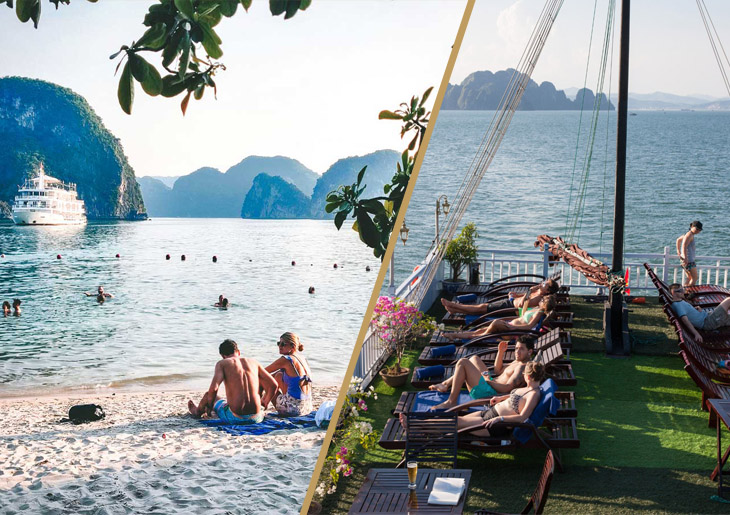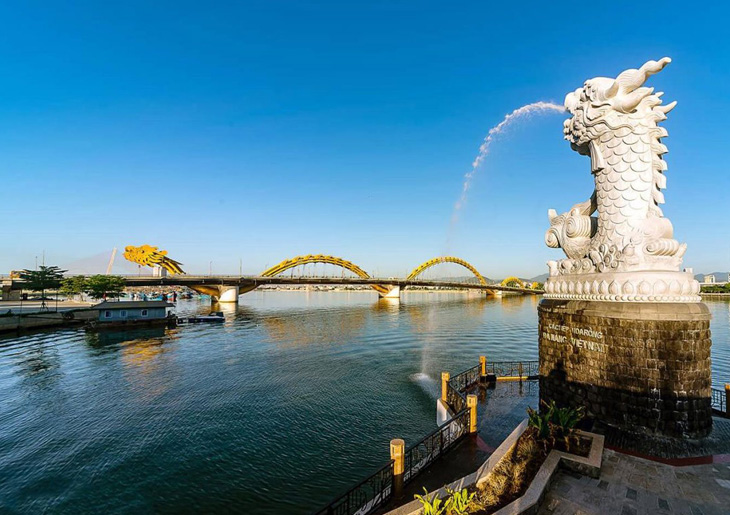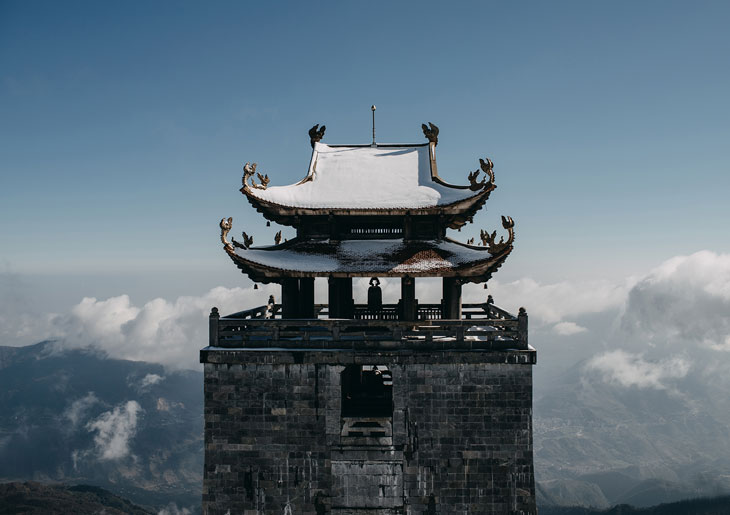Ho Chi Minh Overview
When you think of visiting Vietnam, Ho Chi Minh City must be one of the names that first appear in your mind. The city, also known as Saigon, is famous for its vibrant and energized atmosphere, where you feel as if the night is always still young.

Ho Chi Minh City Street
To put it in another way, if Hanoi is the political head of the country, then Ho Chi Minh City is the economical heart. It is under the influence of both Eastern and Western cultures, along with being a cosmopolitan metropolis, Ho Chi Minh City sure is the traveling experience you would not want to miss out on.
What To Do And What To See In Ho Chi Minh?
With the advantage in terms of location and resources, Ho Chi Minh City was chosen to be the central point in the past and now remains the largest city and one of the most developed ones in Vietnam. Because of that, Ho Chi Minh City is lined with not only traits of modernism but also relics of the city's rich past.
History Museum of Ho Chi Minh City
The History Museum of Ho Chi Minh City is the preservation and display of thousands of valuable artifacts collected in and outside of Vietnam, showcasing Vietnam throughout its history. The museum was built for three years from 1926 to 1928.
The middle part of the museum has an octagonal block, which is reminiscent of the Bagua in Yi Jing, along with many elements of ancient Chinese architecture in decoration. In short, the museum is the perfect execution of the “innovative Indochina style”.
War Remnants Museum
The War Remnants Museum houses numerous artifacts and violent images - evidence of the inhumane war that was put in Vietnam. This is also the place with the Pulitzer Prize-winning portrait "The Terror of War" taken by photographer Nick Ut.
The courtyard is filled with decommissioned planes, tanks, bombs, and helicopters. A visit here will leave you with a depressing but lasting impression of the fight people had to go through to gain back their independence.
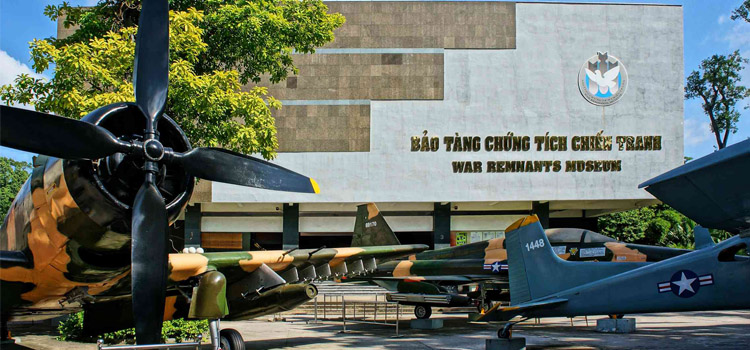
War Remnants Museum
Notre Dame Cathedral Basilica of Saigon
Initially named the Church of Saigon by French colonists, the construction of the cathedral lasted nearly two decades from 1863 to 1880. One special characteristic of the church is that all the original building materials were imported from France, with tiles from the district of Marseille and glass squares supplied by the Lorin firm of Chartres, the French town famous for the 13th-century stained-glass windows of its cathedral.

Notre Dame Cathedral Basilica of Saigon
Saigon Central Post Office
The post office is decorated with a huge portrait of Ho Chi Minh in the center, lines of 20th-century European-style phone booths, along with two painted maps that were created just after the post office was built - one of which is the map of the telegraphic lines of Southern Vietnam and Cambodia in 1892 and the other one is Saigon and its surroundings in 1892.
Cu Chi Tunnels
Located in Cu Chi District, this was once a network of tunnels used by the Viet Cong for the purposes of living and hiding during the war.
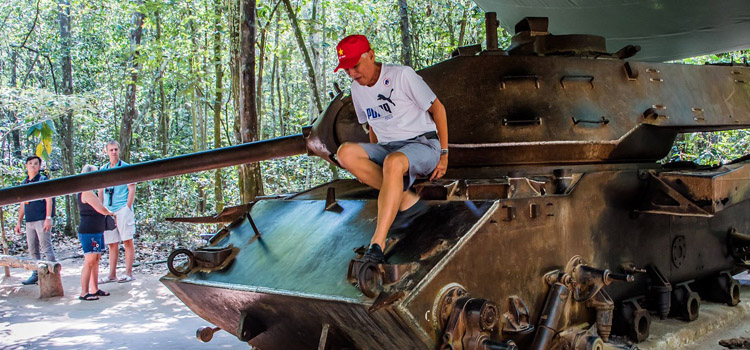
Cu Chi Tunnels
The Reunification Palace
Also known as the Independence Palace, it was once the residential and administrative quarters of the President of South Vietnam.
Nguyen Hue Walking Street
Spanning from City Hall to the Bach Dang Wharf, this walking street is perfect for an afternoon stroll.
Ben Thanh Market
Ben Thanh Market in the center of the city is one of the earliest surviving structures in Saigon and an important symbol of the city. The market runs as both a day market and a night market, making it constantly busy with various options to choose from.
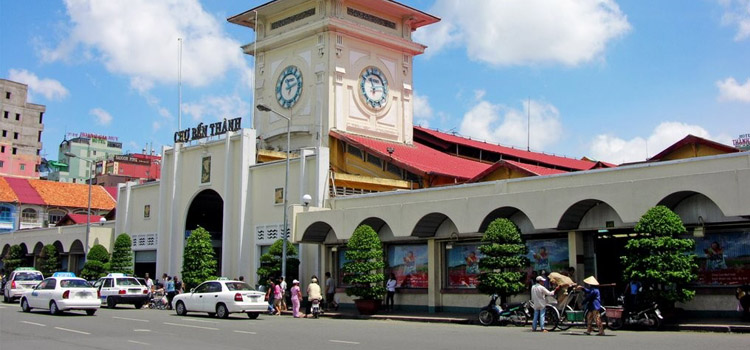
Ben Thanh Market
Saigon Zoo And Botanical Gardens
The Saigon Zoo and Botanical Garden is home to over a hundred species of mammals, reptiles, and birds, as well as many rare orchids and ornamental plants, some of which are not native to Vietnam. It is divided into an animal conservation area, a plant conservation area, an orchid garden, and an amusement park.

Saigon Zoo and Botanical Gardens
Western Street (Bui Vien Street)
The street is always crowded with tourists, with many restaurants, bars, and pubs along the streets, making it the ideal place for nightlife.
Saigon Chinatown
This area offers a completely different vibe from the rest of Saigon, every corner of it gives people the impression of transporting to old China or retro Hong Kong.
What To Eat And Drink In Ho Chi Minh?
Being a metropolis, Ho Chi Minh City is populated with people from all over Vietnam, who then bring their cuisines to the culinary culture of the city. You would not want to miss out on the opportunity to have a full-day street food tour in Ho Chi Minh City.
Com Tam
In the past, the broken rice grains were not fit for sale, so farmers would save and eat them. Nowadays, Com Tam is served both in fancy restaurants and by street vendors. The dish is an unforgettable experience of taste, with honey-glazed barbecued pork chops, sunny-side-up eggs, spring onions, and pickled papaya with sweet fish sauce, all eaten with a bowl of rice.

Com Tam - Ho Chi Minh
Hu Tieu Nam Vang
A hearty bowl of Hu Tieu Nam Vang with thin strings of rice noodles in boiling bone broth, topped with shrimp, pork, quail eggs, and fried garlic can be easily found at every corner of the city.
Banh Mi Huynh Hoa
A typical Banh Mi in Ho Chi Minh City is filled with char siu pork, homemade paté, soft butter, pickled papaya, and chili peppers. Banh Mi Huynh Hoa is a must-try when you travel to Ho Chi Minh City. The place is known for its generous fillings and special taste, each banh mi is almost twice as big as your average one with every bite bringing out the fantastic tastes and textures.

Banh Mi Huynh Hoa
Goi Cuon (summer roll)
The heart of Goi Cuon lies in the taste of fresh ingredients, including green lettuce, herbs, rice vermicelli, steamed pork, and a prawn, all wrapped inside a rice paper, which is then dipped into a thick fermented sauce.
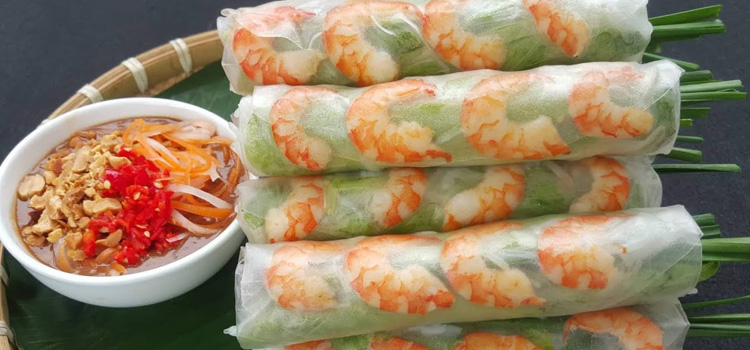
Goi Cuon
Bun Mam
Bun Mam refers to the dish with steamed rice vermicelli fully submerged in either fermented fish paste or fermented shrimp paste, providing an explosion of flavor.
When To Visit Ho Chi Minh?
The weather in Ho Chi Minh City is generally hot and dry, it has only two seasons, which are the dry season from April to May, and the rainy season from May to November, it might get a bit cold during December and January.
If you want to avoid floods and rains all the time, we highly recommend you travel to Ho Chi Minh City during the dry season, you can easily explore the city on your own. However, tourists will have to be careful of heatstroke, as there will be no rain to soothe the intense heat from the sun and being in a metropolis.

Ao Dai on the streets of Ho Chi Minh
If you want to explore more than just what the city can offer and go outside of it, you can try visiting Ho Chi Minh City in the rainy season. From August to November, there will be the floating season in the Mekong Delta, providing a generous source of fish and seafood, you can also visit the floating markets - a distinctive trait of southern Vietnam.
Don’t forget that if you decide to come to Vietnam from January to February, there is a high chance that you will meet the Tet Holiday - the biggest holiday in Vietnam so there might not be stores or tourist attractions open for you to visit.
The Tours From Ho Chi Minh
Ho Chi Minh City - Cu Chi Tunnels
The location of the Tunnels is about 70 km away from Ho Chi Minh City, making Cu Chi a popular day tour or weekend trip from the city. There are various means of transportation for you to choose from, however, if you choose to plan a trip to Cu Chi on your own, be mindful of the time.
Ho Chi Minh City - Mekong Delta
A trip to the Mekong Delta from Ho Chi Minh City is an option every traveler and especially photography lovers should not miss out on. With its vast agricultural landscapes and unique ecosystem, Mekong Delta serves as one of the major food sources for Vietnam.
When you arrive at Mekong Delta, you will be welcomed by ancient pagodas, traditional villages, and floating markets - a distinctive trait of the region.

Mekong Delta floating markets
Ho Chi Minh City - Mui Ne (Ca Mau)
Mui Ne is well-known for its beautiful scenery, wonderful beaches, and the remnants of Champa culture. The distance from Ho Chi Minh City to Mui Ne is about 220 km, which takes from 4-7 hours to travel. The fastest way to get from Ho Chi Minh City to Mui Ne is a road trip via private car, which is around 4 hours of driving.
Want to explore more of Vietnam? Check out other tours by Vietnam Airport Car including Hoi An tour, Ba Na Hills day tour, Hanoi city tour, Mekong Delta tour, and so much more!
For booking private car services from Vietnam Airport Car or any other questions about Ho Chi Minh Tourism, please feel free to contact us. We guarantee the best assistance for your journeys!
